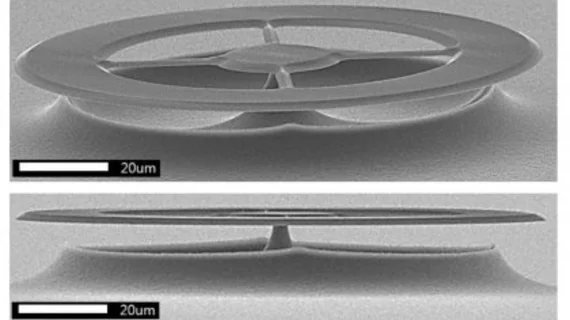Australian researchers’ ‘ultra’ ultrasound could boost sensitivity of standard imaging
Researchers from the University of Queensland in Australia have developed “ultraprecise ultrasound” sensors that are sensitive enough to hear the formation of surrounding air molecules, according to research published online Jan. 10 in Nature Communications.
“We’ve developed a near perfect ultrasound detector, hitting the limits of what the technology is capable of achieving,” senior author Warwick Bowen, PhD, a professor of physics at the University of Queensland, said in a prepared statement. “We’re now able to measure ultrasound waves that apply tiny forces—comparable to the gravitational force on a virus—and we can do this with sensors smaller than a millimeter across.”
By combining nanofabrication (the creation of devices with dimensions measured in nanometers) and nanophononics (the study of the behavior of light on the nanometer scale and of the interaction of nanometer sized objects with light), the researchers built the sensors on a silicon chip.
Ultimately, they hope the technology could soon be applied to medical imaging and enhance standard ultrasound technologies.
“We’ll soon have the ability to listen to the sound emitted by living bacteria and cells,” said lead author Shara Basiri-Esfahani, PhD, a postdoctoral research fellow at the university. “This could fundamentally improve our understanding of how these small biological systems function. A deeper understanding of these biological systems may lead to new treatments, so we’re looking forward to seeing what future applications emerge.”

